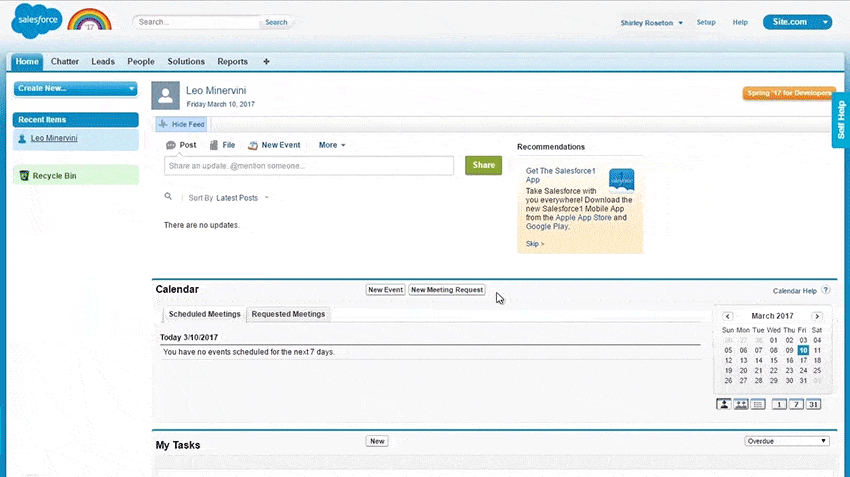How to Create an Effective Logistics Training Program (2024)
- February 2, 2023


Training is an essential part of any successful logistics business. With a solid program in place, you can ensure your team has the knowledge and skills needed to provide efficient, reliable, and cost-effective services to your customers.
Creating an effective logistics training program is an important step to ensure your team has the resources they need to succeed. This guide will provide an overview of the key steps to creating an effective logistics training program, from identifying training needs to evaluating the success of the program.
What Is Logistics Training?
Logistics training empowers logistics employees with the necessary knowledge and skills to successfully manage the transportation and storage of goods, services, and information.
This type of training typically focuses on topics such as inventory management, supply chain management, freight management, and customer service. Logistics training may also include topics such as safety, compliance, and customer service protocols.
The Benefits of Logistics Training
Implementing logistics training drives many positive outcomes for your company, employees, and customers.
1. Gain competitive advantage
Logistics training enables companies to stay ahead of the competition by ensuring teams are trained well on the latest industry trends, technologies, and best practices. This can help to create a competitive edge and allow logistics companies to improve warehouse operations, meet customer needs better, and adjust to changing markets.
A training program gives logistics teams the necessary skills and knowledge to deliver better service than the competition.
Moreover, it’s easier to hunt your competitors’ top talents when you can offer them extensive learning and development opportunities.
2. Improve consumer relationships
By providing employees with the necessary training, you equip them to manage customer relationships effectively.
In your training program, you may include a customer relationship management strategy outlining your company’s mission, values, and tone of voice to ensure a consistent customer experience from every interaction. You can also provide employees with scenarios to follow when issues arise to enable fast and effective problem resolution.
Additionally, hosting regular training workshops is a good idea to keep your logistics employees informed on the changing market and customer demands and adapt quickly.
A well-trained employee can build strong customer relationships and provide solutions to customer needs quickly and efficiently. This helps to build customer loyalty and trust, leading to increased sales and customer satisfaction.
3. Establish more efficient workflows
A logistics training program helps employees understand the complex and changing business environment. It gives them the tools to work more efficiently, which leads to better results and improved workflows.
You can use your training program as a way to document and communicate standard operating procedures (SOPs) and crisis management scenarios — so that your logistics workers don’t have to spend time developing new workflows.
4. Drive logistics tools adoption
Deploying digital solutions, such as data analytics software, forecasting technology, e-signature tools, etc., has become crucial for the logistics industry since COVID-19. Every logistics company must rely heavily on digital tools to deliver quality service and stay competitive.
You shouldn’t expect your workforce to navigate logistics digital transformation on their own. With technology training, you’ll introduce your employees to critical business software and address digital adoption problems in your organization.
5. Retain workforce
Demand for logistics workers has been exceeding supply for a few years now, and employers must do their best to retain their workforces and avoid the pain of hiring new employees.
Therefore, consider providing adequate training and supporting your logistics employees’ career advancement as one of the top strategies for retaining people (and keeping them happy at work). With ninety-four percent of employees willing to stay at a company longer if it invests in their learning and development, creating an employee training program must be a top priority for your HR team.
9 Tips to Build an Effective Logistics Training Program
Here are the nine best practices for building a logistics training program your employees will be grateful for.
Before you can create a great logistics training program, assess the current training needs of your employees.
Evaluate your workforce’s skills and knowledge to identify areas that need improvement. You can choose any of the following analysis methods (or use them all to get more insights):
- Run a survey asking workers directly what they would like to learn
- Conduct a performance review to discover the correlation between performance issues and skill gaps
- Use skills testing to identify your workforce’s current level of competency
Based on the training needs assessment results, you can create a training program tailored to the specific needs of your logistics employees.
Once you have identified the needs of your employees, you can then set both short-term and long-term goals.
How should your logistics training affect the performance of individual employees and the entire organization? Set clear expectations or SMART goals for your program so that you can evaluate its effectiveness and improve it later on.
For example, if you focus on introducing your workforce to new software, a short-term goal may be “having 100 employees complete certification and implement the app in the workflows.” In this case, a long-term goal may sound like “speed up order fulfillment by 1.5 times.”
Now, you need to think of how you’ll present the information to your workforce. Every employee is different, and it’s important to offer an inclusive training program that considers different learning styles.
There’s a wide range of employee training methods you can choose from:
- eLearning
- On-the-job training
- Instructor-led learning
- Roleplaying
- Coaching
- Simulation training
- Collaborative training
- Video training
- Cross-training
- Job shadowing
- Case studies
- Peer-to-peer learning
- Spaced learning
Your choice will depend on your goals, the topics you’re covering in the program, your budget, and other factors. Also, you don’t have to limit your program to only one training method. Mix different techniques to reach people with different learning styles and make training more engaging.
For example, when you decide to host a workshop, fill it with visual, written, and interactive resources to ensure everyone has equal opportunities to retain the information provided.
If you have no educational resources in place, start by creating documentation and building an internal knowledge base. Develop guides answering the most urgent questions to minimize the costly mistakes that your employees might make while you take the time to design a comprehensive training program.
Scenario-based video training is a type of training that uses video to provide instruction on how to properly perform a particular task or procedure. This type of training allows employees to visualize possible work situations and provides them with a step-by-step guide on how to handle them.
Scenario-based video training can also be used to demonstrate the proper use of equipment, such as forklifts or other heavy machinery, or to provide instruction on the rules and regulations of the various shipping carriers. You need to implement this type of training to ensure your staff operates safely and efficiently.
On-the-job training (OJT) helps employees to learn by doing. It involves training and practice of skills related to a specific task within a company.
You can implement OJT as an addition to other types of training, like video training or instructor-led training. It’s a great way to practice recently gained knowledge and improve training efficiency.
OJT is usually conducted on the job by a supervisor or manager and often involves hands-on instruction and observation.
Tip: implement OJT with Whatfix Flows, interactive software walkthroughs. The feature lets you create in-app guides and encourage users to practice new skills immediately.

Printed brochures are no more a thing. Your employees should have access to your training program from anywhere, anytime. Online learning platforms make it possible.
Moreover, quality employee training software saves you a lot of time. You don’t need to write walls of text in Google Docs or spend hours taking screenshots of your business software and layering feature descriptions atop. The following solutions will simplify the process of creating and managing your logistics training program:
- TalentLMS for centralized employee training and performance tracking. This is a corporate LMS platform where you can create simple courses, manage employee onboarding, and monitor training progress.
- Whatfix for technology training. Connect this digital adoption platform to any software in your company’s tech stack to create personalized in-app guidance on key workflows and train your logistics employees in real-time.
- Scribe for step-by-step guides. With this tool, you can automatically generate guides complete with screenshots and captions for any digital process.
- Document360 for internal documentation. Store all your training resources in a centralized knowledge base so that your employees can access them anytime.
- Loom for quick videos. Record short, practical video lessons without professional equipment — just you and your laptop.

Before creating the program, you’ve set short-term and long-term goals. When you implement logistics training, you should be able to see whether you’re making it toward reaching those goals or not.
First, make sure your training software offers monitoring and analytics capabilities so that you can keep track of your learners’ progress in real-time. For example, Whatfix provides you with insights into help content usage, allowing you to see how individual users are making it through in-app training.
At the end of each learning block, implement quizzes or practical tasks to see how your employees are retaining information. Also, ask participants to provide feedback on the program’s content and delivery through surveys and one-on-ones.
Finally, evaluate the performance of each employee after the training is complete. This can be done through conducting regular performance reviews, running skills testing, and collecting feedback from supervisors.
Use the data you gain from monitoring your training program performance to continuously improve it. Every six months or a year, revisit and update your training materials based on user feedback, performance data, and/or changing industry trends.

Logistics training helps you deliver quality service to consumers, keep your workforce engaged, and gain an advantage over your competitors. When developing the training program, tailor its content to the needs of your learners and changing logistics market.
Take the time to monitor the performance of the program and make improvements where needed to keep your training relevant throughout the years. Implement a digital adoption platform like Whatfix to train your employees on your logistics software and monitor their training progress.
Schedule a free demo with us today to learn more about Whatfix digital adoption platform!
Thank you for subscribing!


